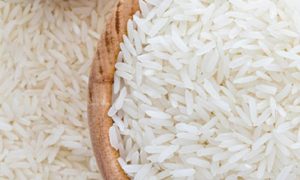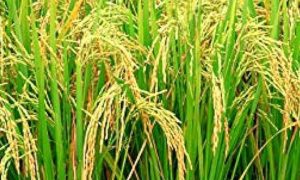‘Cultivation area of Tulaipanji rice surges by nearly 50% in past 6 yrs’

Tulaipanji rice cultivation in Raiganj, North Dinajpur, has surged by 50% over six years, expanding from 6,700 to 10,000 hectares. Known for its aromatic flavor and soft texture, it’s popular both domestically and internationally. However, decreased aroma due to chemical fertilizers has prompted officials to promote organic manure to maintain quality and support continued growth.
Raiganj: Tulaipanji, the renowned aromatic rice variety from Raiganj in North Dinajpur district, is seeing a significant boost in cultivation, thanks to state government incentives. Over the past six years, the cultivation area for this prized rice has surged by nearly 50 per cent, from 6,700 hectares in 2017-18 to approximately 10,000 hectares this year.
The village of Mahiniganj in Bindol is especially noted for its high-quality Tulaipanji rice, with other notable production areas, including Bahar, Bhagilata, Mohipur, Baliadighi, Kantar, Runia, Jaonia, Maslandapur and several villages across the Hemtabad, Kaliyaganj, Ithar and Karandighi blocks in North Dinajpur district.
Tulaipanji rice is celebrated for its soft texture, bright appearance and aromatic flavour, making it a popular choice for dishes like pulao, pudding and biryani. It was prominently featured at the London Olympics food festival in 2012 and received a Geographical Indication (GI) Tag from the Ministry of Commerce and Industry in 2014. The rice is now exported across India and to several international markets. Mangal Poddar, a rice vendor at Mohanbati market in Raiganj, stated: “We sell Tulaipanji rice at Rs 120 to Rs 200 per kilogram, depending on its aroma. The demand for this rice is increasing, especially among visitors to Raiganj who often buy it as a gift.
However, concerns have arisen over the declining aroma and softness of Tulaipanji rice in some areas due to the use of chemical fertilisers. Agricultural officials are now urging farmers to use only organic manure, such as cow dung, to maintain the rice’s quality. Gouranga Barman, Agriculture Extension Officer of Raiganj, emphasised: “Farmers who use chemical fertilisers often see a reduction in aroma. We are advising them to switch to organic manure to ensure they receive a good market price for their crops.” Farmer Taria Mahato from Mohiniganj reported that the use of chemical fertilisers last year diminished the rice’s aroma. Following advice from agricultural officials, he has now transitioned to using only organic manure and Tulaipanji rice is now also available through online markets.
Sandip Kumar Sarkar, Subdivisional Agriculture Officer of Raiganj, added: “Last year, Tulaipanji rice was grown on around 9,000 hectares. This year, we expect to cultivate it on approximately 10,000 hectares. In the last six years, the cultivation areas of Tulaipanji extended around 50 per cent in our district. The rise in cultivation reflects the growing demand. We have distributed pure Tulaipanji seeds through the West Bengal State Seed Corporation and are focusing on educating farmers to avoid chemical fertilisers. We anticipate a successful harvest this year.” The concerted efforts by agricultural officials and the increasing interest among farmers are set to ensure the continued success and growth of Tulaipanji rice production in the region.
To read more about the news about the Rice News continue reading Agriinsite.com















